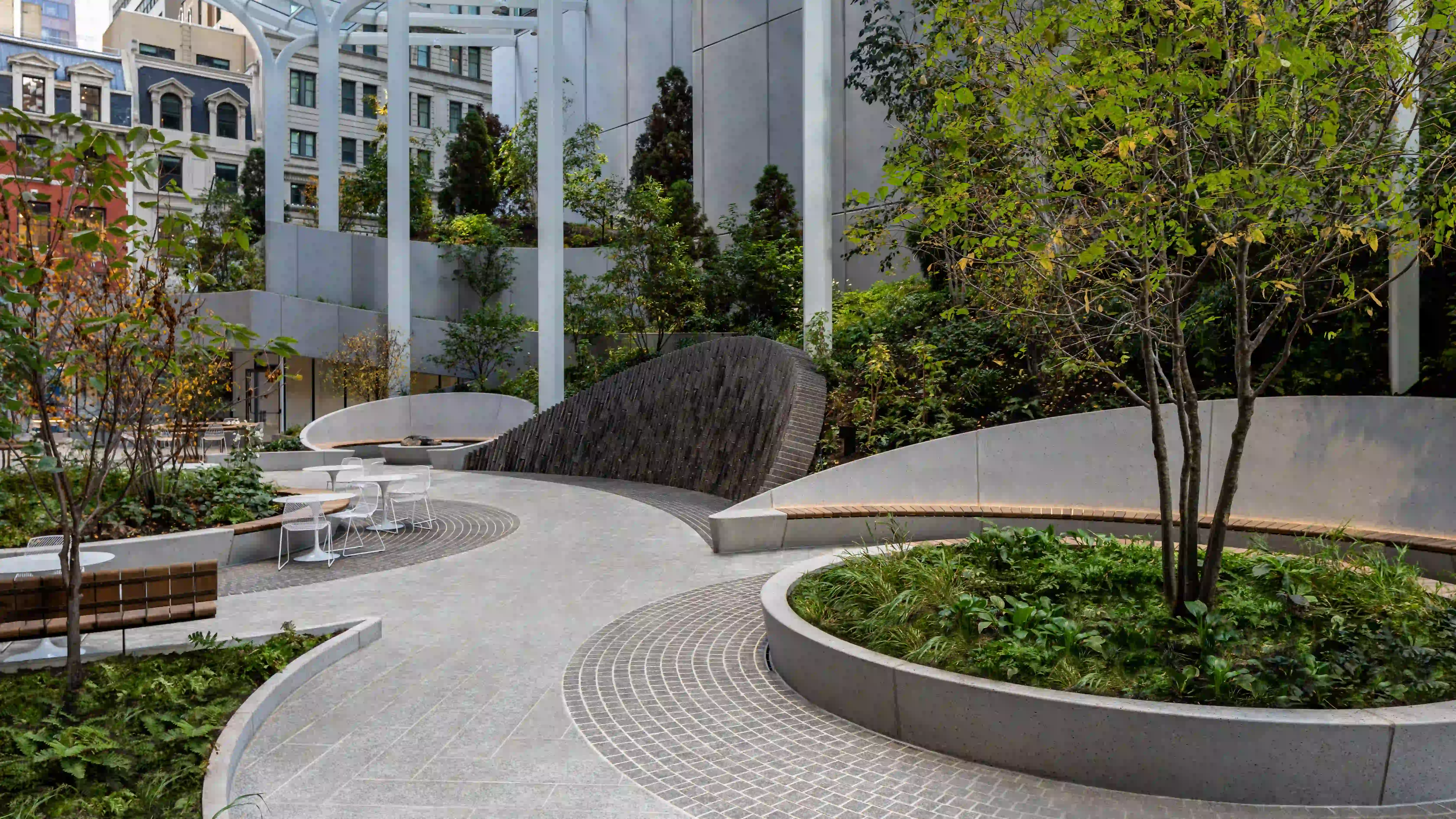Snøhetta Brings Fresh Air into a 1980s Landmark

Snøhetta’s reimagining of 550 Madison's public space is a 21,000 square foot garden-atrium-galleria sheltered by a glass canopy. Photo © Barrett Doherty

550 Madison's amenities spaces in the building's "Sky Lobby" were designed by Rockwell Group. Photo © Nikolas Koenig

Over half of the outdoor space is devoted to plantings, which will be irrigated by rainwater collected from the canopy and stored in cisterns. Photo © Barrett Doherty

An amenity space by Rockwell Group. Photo © Nikolas Koenig




Architects & Firms
When Philip Johnson and John Burgee’s AT&T Building opened on Madison Avenue in New York in 1984, everyone talked about its “Chippendale” top. Now Snøhetta’s repositioning of the Postmodern icon as a multi-tenant office tower focuses attention on its street-level spaces, especially the transformed garden behind it to the west.

550 Madison's distinctive "Chippendale" top. Photo © Alex Fradkin
The original Johnson-Burgee design included an open arcade at the building’s base on its east, north, and south facades, as well as a galleria covered by a glass barrel vault on the west. In 1991, Sony took over the building, enclosed the galleria with glazing and turned the arcade into retail space.
The building, now called 550 Madison, retains retail on the front while returning the galleria to a covered, but not enclosed, space. In the process, the architects enlarged the plaza to 21,000 square feet (from 13,000 square feet) by removing a low annex that had housed a Sony store and designed it all as a garden, topped now by a gently sloping and curve-lipped glass canopy supported by steel columns. “We removed a lot more than we added,” says Craig Dykers, a founding partner of Snøhetta.
The firm broke the long, linear space into a series of circular “rooms” with curving wood tables and stone planters, and brought in 50 trees and more than 200 flowering shrubs, as well as grasses, bulbs, and forbs. On the west side of the garden, the designers installed a granite crescent over which water falls and such features as a heated bench curving around a freestanding “hearth,” equipped with hot rocks on a metal grate. On one corner, they inserted a pavilion with food kiosks and an elegant restroom with gender-neutral toilet stalls.

Aerial view of the gardens. Photo © Barrett Doherty
“It’s not a galleria or an atrium or a garden, but a bit of all three,” says Dykers. More than half the space is devoted to plantings, which will be irrigated by rainwater collected from the canopy and stored in cisterns. By opening the space, a city block wide, on the north and south, the firm hopes to better connect it with the rest of the neighborhood and activate this part of Midtown Manhattan.

1

2
The Gensler-designed lobby interior (1); Interior view of the gardens. Photos © Fred Charles (1); Barrett Doherty (2)
Snøhetta made extensive interventions inside the tower, as well. While its initial big idea—to remove the rose granite base and clad the lower facade with a wavy glass curtain wall—created an uproar among preservationists and ultimately was rejected, the architects were able to install extensive glazing in the back wall of the building, overlooking the garden. By rotating the elevator core 90 degrees, they opened an axis from the main entrance on Madison Avenue through the lobby, where a new arched window offers views out to the planted plaza.
Creating healthier work environments and attractive outdoor spaces are among the ways that employers—and building owners—hope to convince workers to come back to the office. The new 550 Madison is a test of how effective such efforts will be.
This article is an expanded version of one originally published on November 25, 2022.








